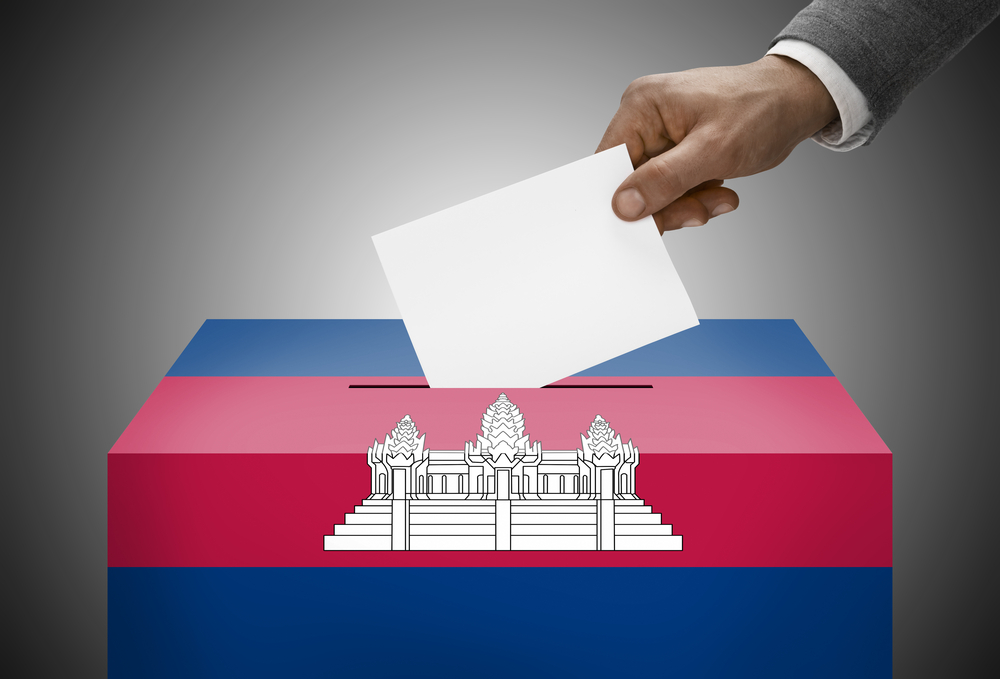Youth Will Be Served in Cambodia’s Next Big Election

Please note that we are not authorised to provide any investment advice. The content on this page is for information purposes only.
Cambodia’s 2013 election was characterised by both the growing engagement of young voters and by numerous instances of collective violence. How will these developments impact Cambodian politics in the lead-up to the 2018 National Assembly election?
Cambodia’s 2013 election was characterised by both the growing engagement of young voters and by numerous instances of collective violence. How will these developments impact Cambodian politics in the lead-up to the 2018 National Assembly election?
In December 2013, a sea of over 100,000 demonstrators took to the streets to protest the election result and irregularities in the process. The election reduced the ruling Cambodia People’s Party’s (CPP) majority in the National Assembly from 90 to 68 seats, but supporters of the opposition Cambodia National Rescue Party (CNRP) claimed that the CPP only secured a majority through electoral fraud. The resulting demonstrations were followed by a deadly clash between protesters and police on Veng Sreng street.
According to the National Election Committee, 3.5 million out of the total 9.5 million registered voters in 2012 were aged between 18 and 30, representing 36 percent of all voters. Some 1.5 million were the first-time voters.
While Cambodia’s youth will continue to play vital roles in electing and challenging their government, new ‘bandage’ policies have been introduced in an attempt to persuade young Cambodians in the lead-up to the 2018 National Assembly election. With the 2013 election results surprising the long-serving ruling party, reforms have been put in place to temporarily relieve the people’s hunger, give voters hope and silence the party’s critics.
Over the last five years, Cambodia’s GDP growth rate has been close to 7 percent. The poverty rate declined from 53.2 percent in 2004 to 17.7 percent in 2012. While a new minimum wage of US$140 per month for garment workers has been effective since January 2016, salaries of civil servants, military forces and police have steadily grown and they are expected to reach US$250 per month by 2018.
Despite this, wide gaps between the rich and the poor, and between urban and rural areas, still exist. The World Bank cautioned that a significant share of Cambodia’s ‘near-poor’, comprising over 8.1 million people, remains vulnerable to ‘economic shocks’. For these Cambodians, a fall in income of just US$0.70 per day would push them into poverty, causing the country’s overall poverty rate to double to 40 percent.
In the National Assembly’s 5th Mandate, the government seeks to give hope to Cambodia’s poor youth through reforms to education and other public goods. Under the new leadership of Dr Hang Chuon Naron, the Ministry of Education, Youth and Sport took steps to ensure bribe- and cheating-free exams for high school students. In addition, it promised to build at least one public university in each of the country’s 24 provinces. Some new civil servants, military personnel and judges are now selected from Cambodia’s youth by nationwide exams monitored by the Anti-Corruption Unit, a government body established in 2010.
Yet there is no real hope that this young generation of civil servants will have a significant and lasting impact on the direction of policy. Allegations of nepotism abound in political parties and state institutions, while the children of farmers and workers remain marginalised.
In the aftermath of the election, Cambodia’s Prime Minister Hun Sen has learned to identify and censor his critics. In early 2015, one of Cambodia’s most controversial laws in recent years, the Law on Associations and Non-Government Organisations was promulgated.
The number of internet users in Cambodia has greatly increased in recent years and it is expected to continue to do so in the years to come. There were 6.25 million internet users in 2015 and up to 9.5 million are expected by 2020, equivalent to 65 percent of the country’s population. The government’s internet censorship has been ramped up accordingly, with the establishment of the Cyber War Team, the Law on Telecommunication and the soon-to-be Law on Cyber Crime.
There are no reliable legal frameworks for sustainable development and inclusive growth. The societal diseases of deforestation and illegal mining, land disputes and forced evacuation remain widespread. Though the ASEAN Economic Community has arrived, Cambodia does not yet have sufficient mechanisms in place to protect its domestic labour force or small local businesses. With such a young population and voter base, job creation, investment and support for start-ups should be at the centre of Cambodia’s political agenda — especially during election campaigns.
Instead of promoting freedom and human rights and strengthening state institutions, the government has made it harder for citizens to demand a representative and responsive government, whether through traditional media or social media. Those who wish to express (political) opinions publicly must be cautious or they risk facing criminal charges.
Facebook has become a government platform, complementing the parliament and the courts. Users voice their concerns, their demands are considered and justice may be granted by officials. The phenomenon has led to allegations of a ‘Facebook Council of Ministers’.
Though popular outcry has been temporarily relaxed, Cambodia’s volatility to collective violence remains worrisome in the absence of strong state institutions and national policies of inclusive growth. Despite their self-proclaimed top performance in the previous mandate, the future for the CPP in 2018 looks cloudy. Unlike their parents of the civil-war and genocide generations, Cambodian youth — a generation shaped by modern education and globalisation — will cast their votes based on a realistic appraisal of the government’s performance and actionable policies, instead of fears and one-time consolations.
Will Cambodia’s youth secure political change? is republished with permission from East Asia Forum




